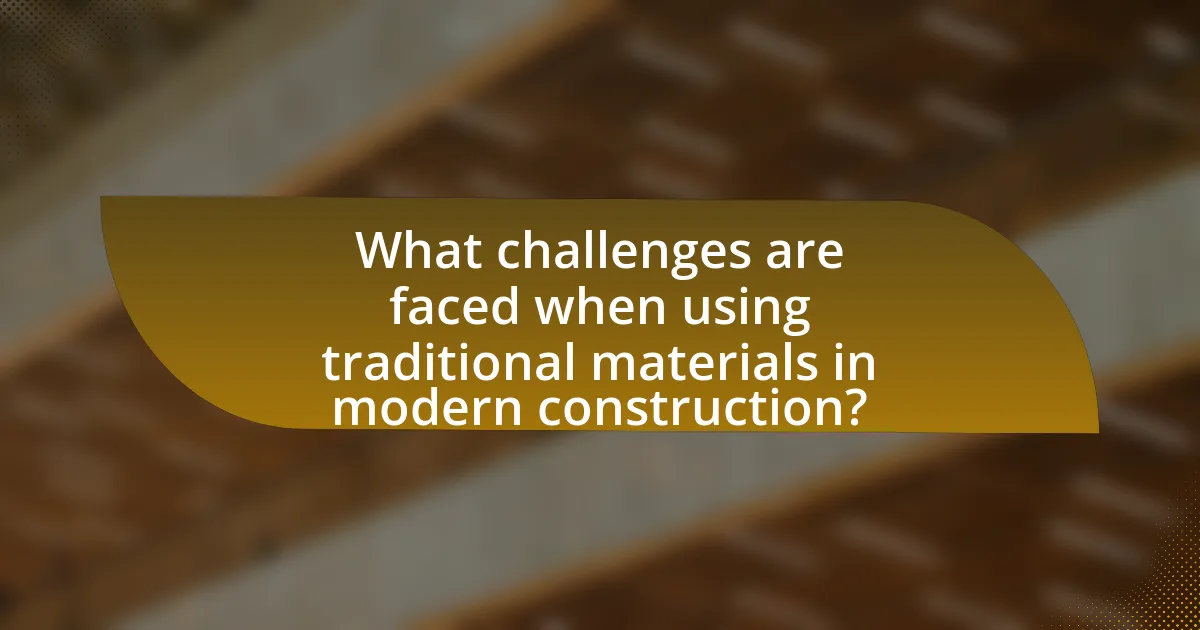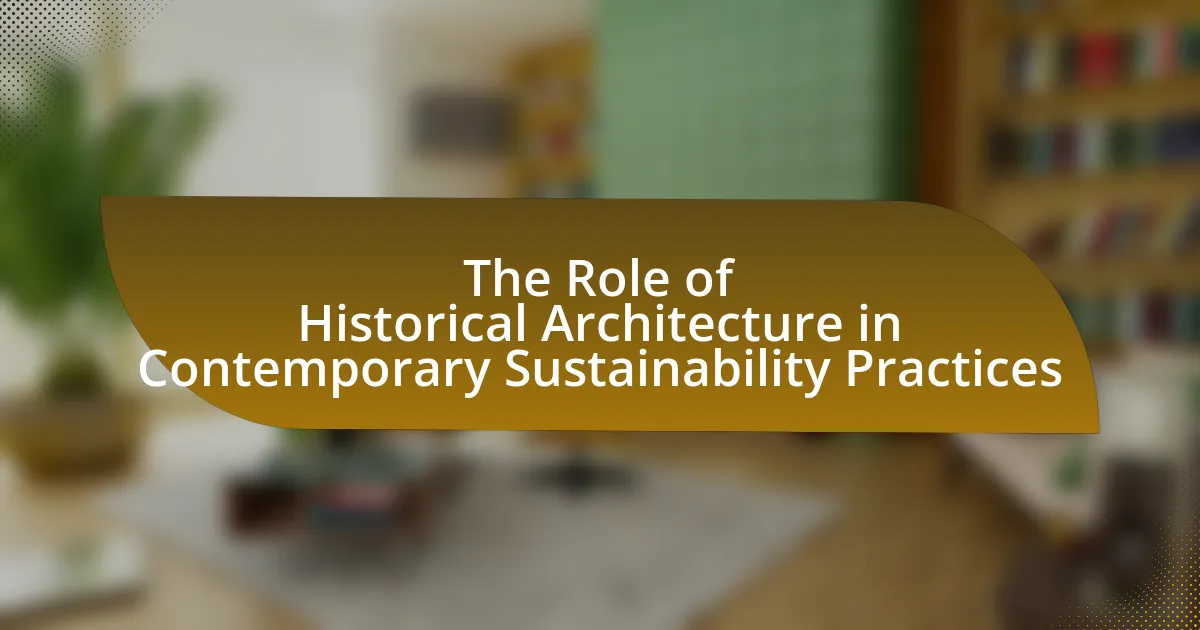Hybrid Material Systems are composite materials that integrate two or more distinct materials to enhance their properties and functionalities, resulting in improved performance characteristics such as increased strength, reduced weight, and enhanced durability. This article explores the differences between hybrid materials and traditional materials, highlighting their key components, aesthetic benefits, and functional advantages across various industries, including aerospace, automotive, and construction. Additionally, it addresses the sustainability aspects of hybrid materials, their role in reducing environmental impact, and the challenges associated with their design and manufacturing. The article emphasizes best practices for implementing these systems to optimize both aesthetic appeal and functional performance.

What are Hybrid Material Systems?
Hybrid Material Systems are composite materials that combine two or more distinct materials to achieve enhanced properties and functionalities. These systems leverage the strengths of each constituent material, resulting in improved performance characteristics such as increased strength, reduced weight, and enhanced durability. For instance, the integration of polymers with metals can yield materials that are both lightweight and resistant to corrosion, making them suitable for applications in aerospace and automotive industries. The effectiveness of Hybrid Material Systems is supported by research indicating that their unique combinations can lead to superior mechanical and thermal properties compared to traditional materials.
How do Hybrid Material Systems differ from traditional materials?
Hybrid Material Systems differ from traditional materials primarily in their composition and performance characteristics. Traditional materials, such as metals, ceramics, and polymers, typically consist of a single material type, which limits their properties to the inherent characteristics of that material. In contrast, Hybrid Material Systems combine two or more different materials to leverage the strengths of each, resulting in enhanced mechanical, thermal, and aesthetic properties. For example, a hybrid material might combine the lightweight nature of polymers with the strength of metals, leading to applications in aerospace and automotive industries where both weight reduction and structural integrity are critical. This combination allows for tailored properties that can meet specific functional requirements, which traditional materials alone may not achieve.
What are the key components of Hybrid Material Systems?
The key components of Hybrid Material Systems include a combination of different materials, such as polymers, metals, ceramics, and composites, which are integrated to achieve enhanced properties. These systems leverage the unique characteristics of each material to optimize performance, durability, and aesthetic appeal. For instance, the incorporation of lightweight polymers with high-strength metals can result in structures that are both strong and visually appealing, making them suitable for various applications in industries like aerospace and automotive. The synergy between these materials allows for tailored solutions that meet specific functional requirements while also providing aesthetic benefits.
Why is the combination of materials significant in Hybrid Material Systems?
The combination of materials is significant in Hybrid Material Systems because it allows for the integration of diverse properties, enhancing both aesthetic appeal and functional performance. By merging materials with different characteristics, such as strength, flexibility, and thermal resistance, these systems can achieve superior outcomes that single materials cannot provide. For instance, combining metals with polymers can result in lightweight structures that maintain durability, as seen in aerospace applications where weight reduction is critical for efficiency. This synergy not only improves the mechanical properties but also enables innovative design possibilities, making hybrid materials increasingly valuable in various industries.
What aesthetic benefits do Hybrid Material Systems provide?
Hybrid Material Systems provide enhanced visual appeal through the combination of diverse materials, allowing for unique textures, colors, and finishes. This aesthetic versatility enables designers to create innovative and striking visual compositions that can adapt to various styles and environments. For instance, the integration of natural materials with synthetic ones can produce a harmonious blend that captures both organic beauty and modern sophistication, appealing to a wide range of aesthetic preferences. Additionally, the ability to manipulate light and shadow through these materials can enhance the overall ambiance of a space, making it more inviting and engaging.
How do Hybrid Material Systems enhance visual appeal in design?
Hybrid Material Systems enhance visual appeal in design by combining diverse materials to create unique textures, colors, and forms that are visually striking. This integration allows designers to leverage the aesthetic qualities of each material, resulting in innovative designs that capture attention and evoke emotional responses. For instance, the use of wood and metal together can create a warm yet industrial look, appealing to contemporary design sensibilities. Additionally, studies have shown that designs utilizing hybrid materials can increase user engagement and satisfaction, as they often present a more dynamic and interesting visual experience compared to single-material designs.
What role do colors and textures play in the aesthetics of Hybrid Material Systems?
Colors and textures significantly enhance the aesthetics of Hybrid Material Systems by creating visual interest and emotional responses. The interplay of various colors can evoke specific feelings, while diverse textures can add depth and tactile engagement, making the materials more appealing. For instance, a study published in the Journal of Materials Science highlights that contrasting colors and textures can influence user perception and interaction, leading to a more immersive experience. This evidence supports the idea that thoughtful integration of colors and textures in Hybrid Material Systems not only improves their visual appeal but also enhances user engagement and satisfaction.
What functional advantages do Hybrid Material Systems offer?
Hybrid Material Systems offer enhanced performance characteristics, including improved strength-to-weight ratios, increased durability, and superior thermal and electrical properties. These advantages arise from the combination of different materials, allowing for tailored properties that meet specific application requirements. For instance, the integration of polymers with metals can result in materials that are both lightweight and resistant to corrosion, making them ideal for aerospace and automotive applications. Additionally, hybrid systems can exhibit better energy absorption and impact resistance, which is crucial in safety-critical environments.
How do Hybrid Material Systems improve performance in various applications?
Hybrid Material Systems enhance performance in various applications by combining the advantageous properties of different materials, resulting in improved strength, durability, and functionality. For instance, in aerospace engineering, hybrid composites that integrate carbon fibers with epoxy resins exhibit superior tensile strength and reduced weight compared to traditional materials, leading to increased fuel efficiency and performance. Additionally, in the construction industry, hybrid systems that merge concrete with steel reinforcement provide enhanced load-bearing capacity and resistance to environmental factors, thereby extending the lifespan of structures. These improvements are supported by studies showing that hybrid materials can outperform single-material systems in mechanical properties and application-specific performance metrics.
What are the durability and maintenance benefits of Hybrid Material Systems?
Hybrid Material Systems offer enhanced durability and reduced maintenance requirements due to their unique composition, which combines the strengths of different materials. These systems typically exhibit superior resistance to environmental factors such as moisture, temperature fluctuations, and UV radiation, leading to a longer lifespan compared to traditional materials. For instance, studies have shown that hybrid composites can withstand mechanical stress better, reducing the likelihood of wear and tear. Additionally, the integration of materials like polymers with metals or ceramics can minimize the need for frequent repairs or replacements, ultimately lowering maintenance costs and extending the service life of structures or products.
How do Hybrid Material Systems contribute to sustainability?
Hybrid Material Systems contribute to sustainability by combining materials with complementary properties to enhance performance while reducing environmental impact. These systems often utilize renewable or recycled materials, which decreases resource depletion and waste generation. For instance, the integration of bio-based polymers with traditional materials can lead to lighter, stronger products that require less energy for production and transportation. Research indicates that using hybrid materials can reduce carbon emissions by up to 30% compared to conventional materials, demonstrating their potential for promoting sustainable practices in various industries.
What environmental benefits are associated with using Hybrid Material Systems?
Hybrid Material Systems offer significant environmental benefits, primarily through resource efficiency and reduced waste. These systems often combine materials that enhance performance while minimizing the use of raw materials, leading to lower energy consumption during production. For instance, the integration of natural fibers with polymers can reduce the carbon footprint associated with manufacturing processes. Additionally, hybrid materials can improve durability and lifespan, which decreases the frequency of replacements and ultimately reduces landfill waste. Studies have shown that using hybrid materials can lead to a reduction in greenhouse gas emissions by up to 30% compared to traditional materials, highlighting their potential for sustainable development.
How do Hybrid Material Systems support recycling and waste reduction?
Hybrid Material Systems support recycling and waste reduction by combining materials that can be more easily separated and processed at the end of their life cycle. These systems often utilize a mix of biodegradable and recyclable components, which facilitates the recycling process and minimizes landfill waste. For instance, research indicates that using hybrid composites can reduce the environmental impact by up to 30% compared to traditional materials, as they allow for more efficient recovery of valuable resources. This efficiency in material recovery directly contributes to waste reduction and promotes a circular economy, where materials are reused rather than discarded.
What industries are most impacted by Hybrid Material Systems?
The industries most impacted by Hybrid Material Systems include aerospace, automotive, construction, and electronics. In aerospace, hybrid materials enhance performance and reduce weight, leading to fuel efficiency and improved safety. The automotive industry benefits from hybrid materials through increased durability and reduced emissions, contributing to the development of electric and lightweight vehicles. In construction, hybrid materials provide better insulation and structural integrity, which is essential for sustainable building practices. The electronics sector utilizes hybrid materials for improved thermal management and miniaturization of components, facilitating advancements in technology. These impacts are supported by ongoing research and development in material science, demonstrating the transformative potential of hybrid materials across these key industries.
How are Hybrid Material Systems utilized in architecture and construction?
Hybrid Material Systems are utilized in architecture and construction to combine the strengths of different materials, enhancing both aesthetic appeal and structural performance. These systems often integrate materials such as wood, steel, and concrete, allowing for innovative designs that meet functional requirements while also providing visual interest. For instance, the use of cross-laminated timber with steel frameworks can reduce weight while maintaining strength, leading to more sustainable building practices. Additionally, hybrid systems can improve energy efficiency through better insulation properties, as seen in buildings that incorporate composite materials designed for thermal performance. This approach not only optimizes resource use but also aligns with modern architectural trends that prioritize sustainability and design flexibility.
What innovations in consumer products stem from Hybrid Material Systems?
Innovations in consumer products stemming from Hybrid Material Systems include advanced electronics, lightweight automotive components, and high-performance sporting goods. These products leverage the unique properties of hybrid materials, such as enhanced strength-to-weight ratios and improved durability. For instance, the use of carbon fiber reinforced polymers in automotive design has led to vehicles that are both lighter and more fuel-efficient, while maintaining structural integrity. Additionally, hybrid materials in electronics, such as flexible displays and wearables, have enabled the development of devices that are both aesthetically pleasing and functional, showcasing the versatility and adaptability of these systems in various consumer applications.
What challenges are associated with Hybrid Material Systems?
Hybrid Material Systems face several challenges, including compatibility issues, manufacturing complexities, and performance variability. Compatibility issues arise when different materials do not bond effectively, leading to delamination or reduced structural integrity. Manufacturing complexities stem from the need for specialized processes to combine materials, which can increase production costs and time. Performance variability can occur due to the differing properties of the constituent materials, potentially resulting in unpredictable behavior under stress or environmental conditions. These challenges necessitate careful design and testing to ensure that hybrid systems meet desired aesthetic and functional criteria.
What are the common limitations of Hybrid Material Systems?
Common limitations of Hybrid Material Systems include issues related to compatibility, manufacturing complexity, and performance consistency. Compatibility challenges arise when different materials do not bond effectively, leading to delamination or failure at the interface. Manufacturing complexity is heightened due to the need for specialized processes to combine materials, which can increase production costs and time. Performance consistency can be affected by variations in material properties, resulting in unpredictable behavior under stress or environmental conditions. These limitations have been documented in various studies, highlighting the need for careful material selection and processing techniques to mitigate these issues.
How can these challenges be addressed in design and manufacturing?
Challenges in design and manufacturing can be addressed through the integration of advanced computational design tools and innovative material selection. Utilizing software that simulates material behavior allows designers to optimize hybrid material systems for both aesthetics and functionality, ensuring that the final product meets performance criteria while also appealing visually. For instance, research by Ashby and Johnson in “Materials and Design” highlights how computational methods can predict the performance of hybrid materials, leading to more efficient designs. Additionally, adopting a collaborative approach between designers and manufacturers can streamline the production process, reducing waste and improving the overall quality of the final product.
What are best practices for implementing Hybrid Material Systems?
Best practices for implementing Hybrid Material Systems include thorough material selection, precise design integration, and rigorous testing protocols. Material selection should focus on compatibility, performance characteristics, and sustainability, ensuring that the chosen materials complement each other effectively. Design integration requires a collaborative approach among engineers, designers, and manufacturers to optimize the functionality and aesthetics of the hybrid system. Rigorous testing protocols must be established to evaluate the performance, durability, and safety of the hybrid materials under various conditions, ensuring that they meet industry standards and user expectations. These practices are supported by research indicating that successful hybrid systems can enhance both aesthetic appeal and functional performance, as seen in applications ranging from architecture to consumer products.
How can designers effectively choose materials for Hybrid Material Systems?
Designers can effectively choose materials for Hybrid Material Systems by evaluating the specific performance requirements and aesthetic goals of the project. This involves analyzing the mechanical properties, durability, and environmental impact of potential materials, as well as their compatibility with each other. For instance, a study published in the Journal of Materials Science highlights that combining materials like carbon fiber and epoxy resin can enhance strength while maintaining lightweight characteristics, making them ideal for applications in aerospace and automotive industries. By systematically assessing these factors, designers can create optimized hybrid systems that meet both functional and aesthetic criteria.
What considerations should be made for the lifecycle of Hybrid Material Systems?
Considerations for the lifecycle of Hybrid Material Systems include material selection, environmental impact, and end-of-life management. Material selection should prioritize compatibility and performance to ensure durability and functionality throughout the system’s lifespan. Environmental impact assessments are crucial to evaluate the sustainability of materials used, including their carbon footprint and recyclability. End-of-life management strategies must be developed to address disposal or recycling options, ensuring that materials can be repurposed or safely discarded, thereby minimizing waste. These considerations are essential for optimizing the performance and sustainability of Hybrid Material Systems.







































